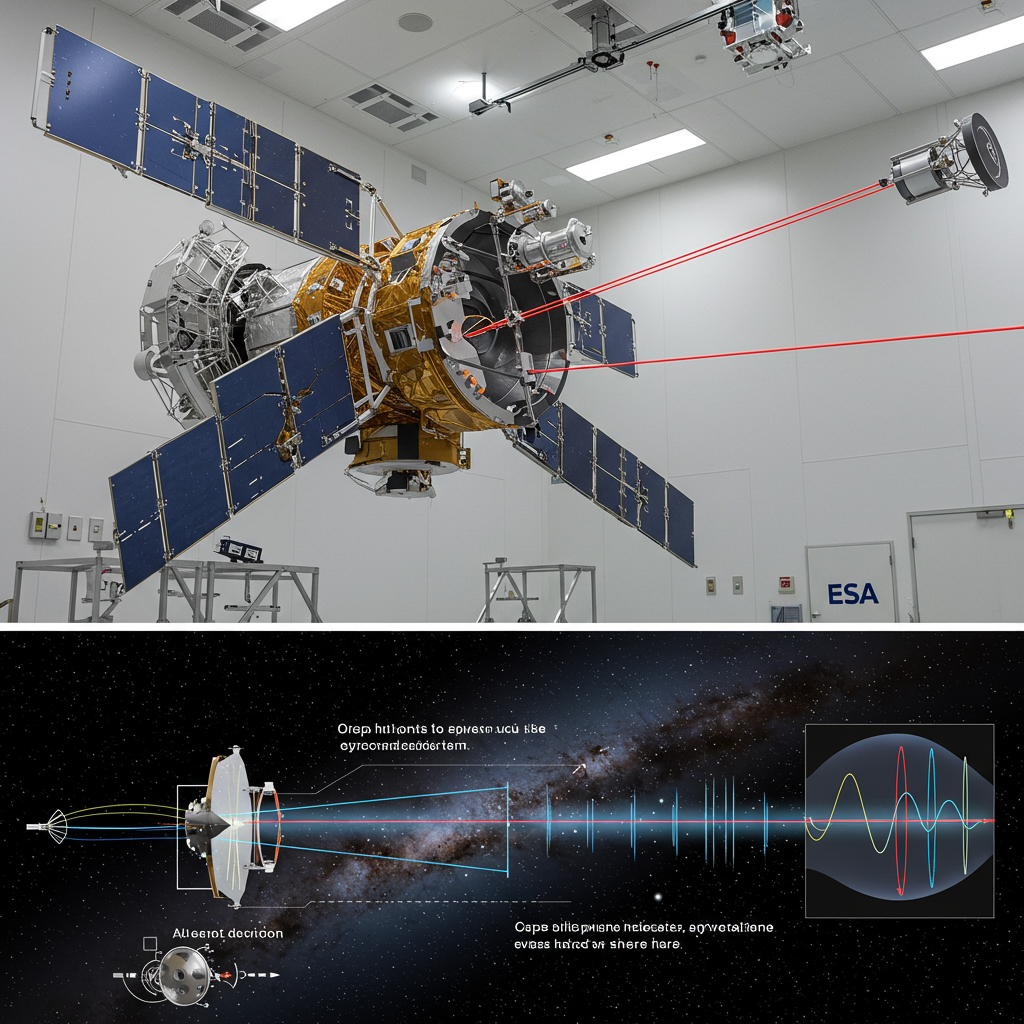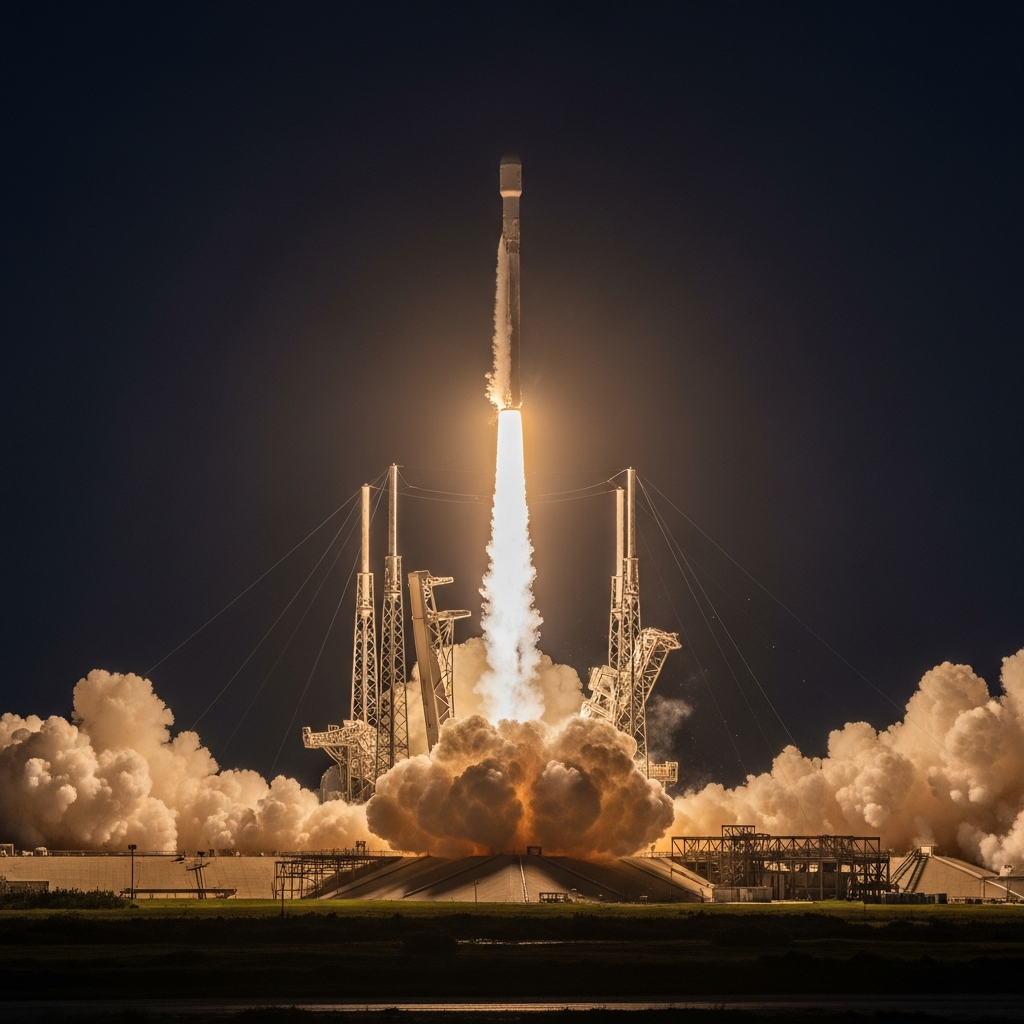Construction Begins on ESA’s Groundbreaking LISA Mission
A major milestone has been reached for the European Space Agency’s (ESA) Laser Interferometer Space Antenna (LISA) mission. Construction of the ambitious spacecraft has officially commenced, following the signing of a contract between ESA and OHB System AG. This agreement kicks off the industrial development phase for what is set to become the first-ever space-based observatory dedicated to detecting gravitational waves.
Gravitational waves are elusive ripples in the fabric of spacetime, predicted by Einstein’s theory of general relativity. They are generated by the most cataclysmic events in the cosmos, such as the violent collision and merger of supermassive black holes or the final dance of binary stars before they collapse.
Hunting Spacetime Ripples from Space
Unlike ground-based detectors, which are limited to higher frequencies by Earth’s environment, LISA will operate in the vacuum of space. This unique vantage point allows it to capture much lower-frequency gravitational waves. These low-frequency signals carry information from cosmic events on scales far larger than those detectable from Earth, potentially offering a glimpse into the Universe’s earliest moments, perhaps even before the first stars and galaxies formed.
Once operational, LISA is poised to revolutionize our understanding of the cosmos:
Tracing Cosmic History: It will track the growth and merging of massive black holes across cosmic ages, revealing how these behemoths shape galactic evolution.
Exploring the Dark Universe: By detecting phenomena invisible to traditional light-based telescopes, LISA will open a new window into the hidden “dark corners” of the Universe.
Testing Fundamental Physics: The mission will probe the fundamental nature of gravity itself and provide independent measurements of the Universe’s expansion rate.
Mapping Our Galaxy: Within the Milky Way, LISA will provide unprecedented insights into the formation and evolution of tens of thousands of compact binary star systems and stellar-origin black holes.
A Giant Interferometer in Space
To achieve its extraordinary scientific goals, LISA is designed as a constellation of three spacecraft. They will fly in a precise triangular formation, trailing Earth in its orbit around the Sun. The sides of this equilateral triangle will stretch an immense 2.5 million kilometers each – more than six times the distance between the Earth and the Moon. Maintaining this vast, precise formation is an engineering feat never before attempted.
The core of LISA’s technology lies in its highly sensitive laser interferometry system. Each spacecraft carries two free-floating test masses: solid gold-platinum cubes slightly smaller than a Rubik’s cube. These test masses are shielded from all external forces except gravity. As a gravitational wave passes through the formation, it causes minute distortions in spacetime, leading to incredibly tiny changes in the distances between these test masses across the three spacecraft.
LISA will detect these minuscule shifts by exchanging ultra-stable laser beams between the spacecraft. By precisely measuring the time it takes for the light to travel across the 2.5 million km arms and superimposing the signals, the mission can detect distance variations down to a few billionths of a millimeter – shifts less than the diameter of a helium atom. Achieving this picometer-level accuracy over vast distances requires cutting-edge technology, including precision telescopes (like the prototype recently developed by NASA), sensitive detection systems, and robust diagnostic subsystems. The mission builds upon technologies proven by previous ESA missions like LISA Pathfinder, Gaia, and Euclid.
A Triumph of International Collaboration
Led by ESA, the LISA mission is a testament to global scientific and technological cooperation. It involves extensive partnership with ESA Member States, NASA, and an international consortium of scientists. The industrial core team responsible for building the spacecraft is led by OHB System AG, working alongside partners like Thales Alenia Space.
Numerous countries are contributing critical hardware elements. Italy and Switzerland are providing the precision free-floating test masses. Germany, the UK, France, the Netherlands, Belgium, Denmark, and the Czech Republic are supplying the picometer-accuracy systems needed to detect the interferometric signal. Spain is providing the crucial Science Diagnostics Subsystem. NASA’s contributions include ultra-stable lasers and the sophisticated telescopes used to transmit and receive the laser beams.
The mission represents years of dedicated technological development and unwavering support from the scientific community and member states. As ESA Director of Science, Prof. Carole Mundell, highlighted, LISA will “open a brand-new window on the dark Universe and test the known laws of physics to their extreme,” showcasing precision engineering and international cooperation on an unprecedented scale. OHB System AG CEO, Chiara Pedersoli, expressed immense pride, stating the mission will enable humanity to “surf gravitational waves” and see the Universe in a completely new way.
With construction now underway, the three LISA spacecraft are planned for launch in 2035 aboard an Ariane 6 rocket. Once operational, LISA will add a new dimension – the “sound” – to our understanding of the cosmos, complementing traditional observations based on light and ushering in a new era of multi-messenger astronomy and fundamental physics exploration.
References
- <a href="https://www.esa.int/ScienceExploration/SpaceScience/LISA/ConstructionofESAsambitiousLISAmission_begins”>www.esa.int
- dailygalaxy.com
- dailygalaxy.com
- europeanspaceflight.com
- <a href="https://www.esa.int/ScienceExploration/SpaceScience/LISA/CapturingtheripplesofspacetimeLISAgets_go-ahead”>www.esa.int




